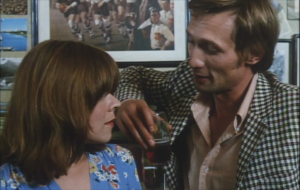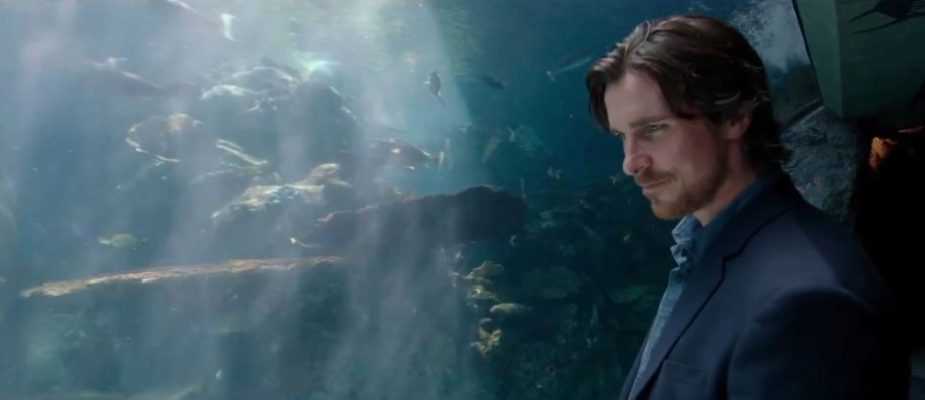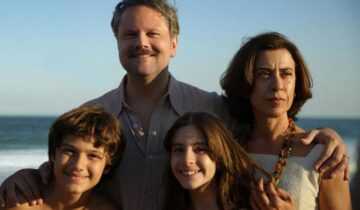Deeply divisive in its Berlinale world premiere, though it is still the betting favorite to take home the festival’s first prize, the highly fragmented, boundlessly lyrical Knight of Cups (2015), the latest from Bartlesville, Oklahoma-native Terrence Malick (The Thin Red Line, The Tree of Life), opens with a voiced-over reference to John Bunyan’s 17th-century The Pilgrim’s Progress. That text, one of the key writings of English Protestantism, and deeply influential within the same American colonies that Malick brought to such exquisite life in The New World (2005), provides a number of immediate clues to Malick’s superficially quixotic purposes in this work of rare allegory for the early 21st century. For starters, the heavily impressionistic, subjectivity filtered Knight of Cups will maintain the same “similitude of a dream” as Bunyan’s work; this indeed is Malick’s Mulholland Drive. It too will feature an everyman named Christian (Bale as Rick, in the case of Knight of Cups), who is weighed down by the knowledge of his sin. Bale’s hero first finds himself in Death Valley, Southern California’s answer to The Pilgrim’s Progress pivotal Valley of the Shadow of Death, no doubt. And Bale’s “pilgrim” Rick will finally, at least it seems in Malick’s film, find deliverance into a desired country.
If the film’s allegorical thrust can be explained by Bunyan, as well as by a seventeenth century mystical and alchemical tradition (referenced by the film’s first poster, purportedly) that insisted salvation could be reached only by going to hell first, the particularly of Rick’s hedonistic journey is suggested by the film’s title: the ‘knight of cups’ is a tarot card, which, in its upright position, signals change and new excitements, particularly of a romantic nature. The cardholder is subject frequently to boredom, he requires constant stimulation and is an artist and dreamer by nature. Such is Bale’s wealthy and successful Hollywood writer. (Between the actor’s given name and his biography, there seems little doubt that Malick crafted the character with his New World star in mind.) When reversed, the same card represents unreliability and recklessness – the latter providing one of Rick’s most obvious shortcomings.
Knight of Cups is structured – across a series of titled, episodic (and very elliptical) chapters – by a progression of romantic partners that combine to define Rick’s wanting spiritual existence. Though each woman offers a different path and set of temptations, they all, save for one briefly glimpsed final pairing, represent the way of sin, or at least portend Rick’s condemnation. Even Cate Blanchett’s physician, a secular saint of sorts – she treats badly deformed patients in a set of the most Christian humanistic passages seen anywhere since the lepers of Roberto Rossellini’s The Flowers of St. Francis (1950) – offers “judgement” for the pilgrim traveler. The women of Knight of Cups belong to a world to which Rick ultimately is just passing through, even as he reaps its every pleasure.
Bale, even less than his startlingly beautiful love objects, has very little dialogue throughout the voice-over heavy Knight of Cups; instead he observes, he remembers and he struggles in his path to salvation in this highly subjectivized portrait of a fallen Hollywood screenwriter. Knight of Cups indeed depicts the life of the soul, represented in the aforesaid interior fragments. However, it is also a work that gives voice to his many partners, employing the same floating voice-over strategy that the director mastered with such exquisite complexity in The Thin Red Line (1998), the director’s work that Knight of Cups most closely resembles.
Malick showcases endless worldly pleasure, in the proximate manner of a La Dolce Vita (1960; screening in March at OKCMOA), though his filtered articulation of Rick’s hedonistic lifestyle manages to strip the film’s pleasures of at least some of their appeal. Knight of Cups, in this sense, is a bravely contrary work, a film that deigns to position itself against a prevailing Hollywood moral system that celebrates the acts that torment Rick no less, no less than against an artistic mode that privileges story and affirmative self-actualization. Knight of Cups is counter-cinema in every sense of the phrase, a new dream-like form (that heightens the quintessentially Malickian) that incorporates some of the most staggering imagery, both photographed and computer-generated, of the decade. This new culmination of Malick’s art and craft may just be one for the ages.
 A much safer achievement in this year’s Berlinale, and Malick’s primary challenge for the Golden Bear, Pablo Larraín’s fine El Club (2015) benefits from its more acceptable anti-Catholicism, or at least its anti-Church ethos: a group of defrocked priests, and one caretaker nun, live together in an often overcast, very unexceptional Chilean seaside town. Vowing silence outside their secretive private residence, they spend their time, among other ways, gambling on greyhound races. When a new resident arrives, one of his victims follows, leading to a first-act suicide that will prefigure the violent acts to come.
A much safer achievement in this year’s Berlinale, and Malick’s primary challenge for the Golden Bear, Pablo Larraín’s fine El Club (2015) benefits from its more acceptable anti-Catholicism, or at least its anti-Church ethos: a group of defrocked priests, and one caretaker nun, live together in an often overcast, very unexceptional Chilean seaside town. Vowing silence outside their secretive private residence, they spend their time, among other ways, gambling on greyhound races. When a new resident arrives, one of his victims follows, leading to a first-act suicide that will prefigure the violent acts to come.
The latest and most oblique of Larraín’s examinations of the Pinochet years (see also Tony Manero, Post Mortem and NO), El Club points to the regime’s practice of stealing children, while also setting its sights equally on the Church’s uneasy relationship with homosexuality and its criminal complicity in a number of high profile sexual abuse cases. Filmed by the Chilean auteur in his increasingly familiar dirty aesthetic, an art that witnesses significant surface streaking and flaring, El Club is yet another affecting tale of psychic suppression that is most successful for its creation of a truly last atmosphere. Very good work again from Larraín.
 Aside from these two Competition favorites, my final days at the 65th Berlinale were also distinguished by a lovely 4K restoration of Wim Wenders’ long out-of-circulation The Goalie’s Anxiety at the Penalty Kick (1972), a darkly comic template for the dead-time predilection and existential rootlessness that would come to define his sterling 1970s cinema in particular (see the wonderful Alice in the Cities and Kings of the Road, 1974 and 1976 respectively). In this very early example of the director’s art, a goalkeeper is given time off for injury after he comically lets in an extremely soft goal. What follows are days and especially nights spent attending movies – Howard Hawks’s late-period Red Line 7000 makes a cameo on a theater marquee – wandering the village streets and hanging out in his hotel room (the film’s period details and atmospheric qualities again rank among its obvious strengths), picking up women, and reading the newspaper for word on a local killing. The Goalie’s Anxiety at the Penalty Kick is a zeitgeist-y accomplishment from a director who would quickly establish himself as one of the leading auteurs of the New German Cinema.
Aside from these two Competition favorites, my final days at the 65th Berlinale were also distinguished by a lovely 4K restoration of Wim Wenders’ long out-of-circulation The Goalie’s Anxiety at the Penalty Kick (1972), a darkly comic template for the dead-time predilection and existential rootlessness that would come to define his sterling 1970s cinema in particular (see the wonderful Alice in the Cities and Kings of the Road, 1974 and 1976 respectively). In this very early example of the director’s art, a goalkeeper is given time off for injury after he comically lets in an extremely soft goal. What follows are days and especially nights spent attending movies – Howard Hawks’s late-period Red Line 7000 makes a cameo on a theater marquee – wandering the village streets and hanging out in his hotel room (the film’s period details and atmospheric qualities again rank among its obvious strengths), picking up women, and reading the newspaper for word on a local killing. The Goalie’s Anxiety at the Penalty Kick is a zeitgeist-y accomplishment from a director who would quickly establish himself as one of the leading auteurs of the New German Cinema.
***
To re-cap my six days and thirteen screenings, listed are my top five from a festival that was especially strong at the very top:
1) Knight of Cups (Terrence Malick, 2015, Competition)
2) Taxi (Jafar Panahi, 2015, Competition)
3) TAUT (Michael Snow, 2012, Forum Expanded)
4) The Goalie’s Anxiety at the Penalty Kick (Wim Wenders, 1972, Hommage)
5) El Club (Pablo Larraín, 2015, Competition)










